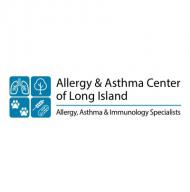Immunotherapy: This innovative treatment may be employed to treat most allergies (no matter the severity of symptoms). There are a variety of methods your doctor may employ: oral ingestion, injection, sublingual drops (placed under the tongue to dissolve). Immunotherapy aims to desensitize the immune system’s negative response to a particular allergen through gradual exposure over a period of time. Each method requires a different schedule for gradual exposure.
Antihistamines: Consists of over-the-counter or prescription medications taken by mouth. We may recommend over-the-counter antihistamines as a first step to treating your condition or may prescribe you stronger antihistamines depending on the severity of your condition. Antihistamines block a chemical created in the body called histamine (which creates allergy-associated symptoms). This medication reduces symptoms associated with allergies and provides instant and long-lasting relief (up to 24 hours depending on the brand).Â
Asthma Preventers: This type of treatment consists of inhaled steroid medication that helps prevent allergic asthma flare-ups. This inhaled steroid medication usually comes in the following colors: red, orange, brown, or purple. Preventers reduce any swelling or redness in the airways and dry up mucus to remove any blockage that could cause respiratory symptoms associated with allergic asthma. Commonly prescribed asthma preventers include Budesonide, Beclometasone, Mometasone, Ciclesonide, and Fluticasone.
Asthma Relievers: This treatment is utilized in the event that an asthmatic individual experiences an asthma attack or allergic asthma flare-up due to inhalant allergen exposure. An asthma reliever comes in the form of an inhaled steroid medication (like a preventer) but provides immediate relief by relaxing the airway muscles, so it is easier to breathe. A reliever should be carried with you at all times, as it can save their life in the event of an unexpected allergic asthma attack.



